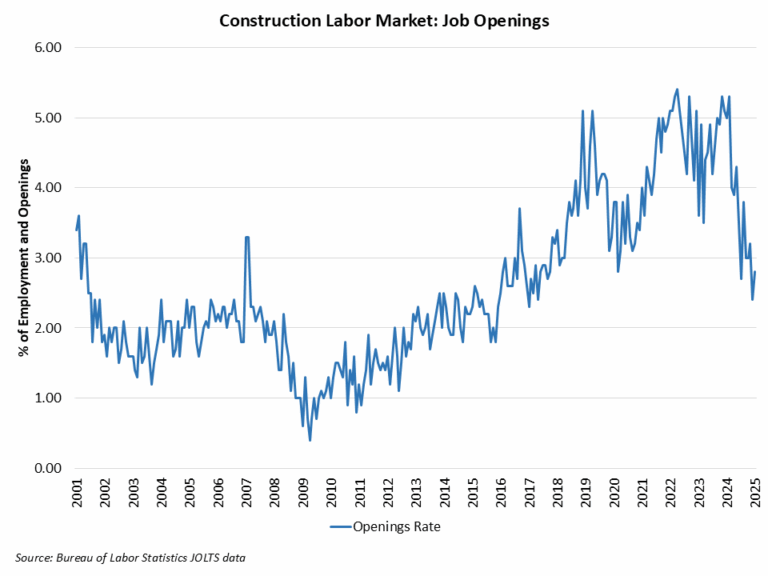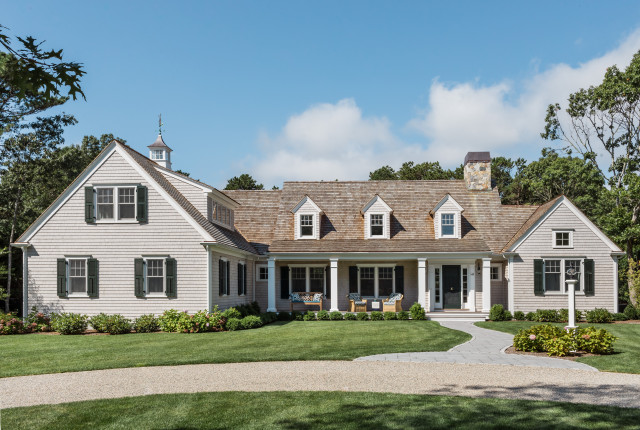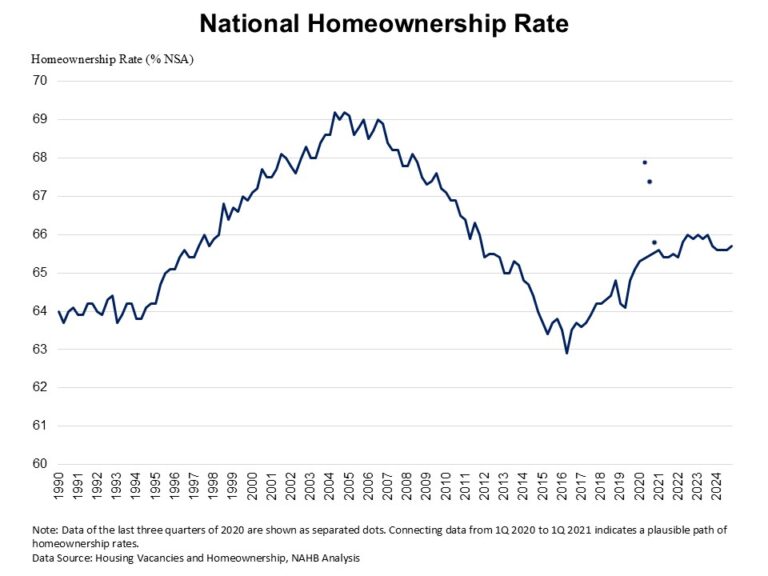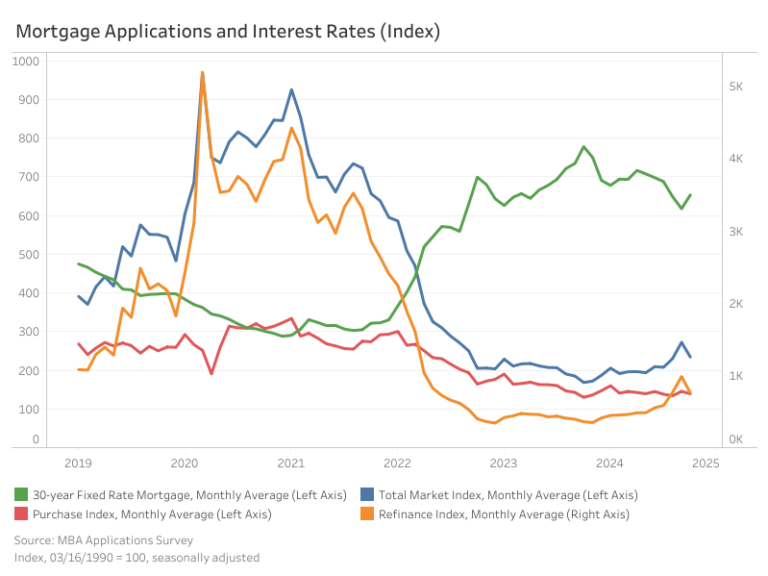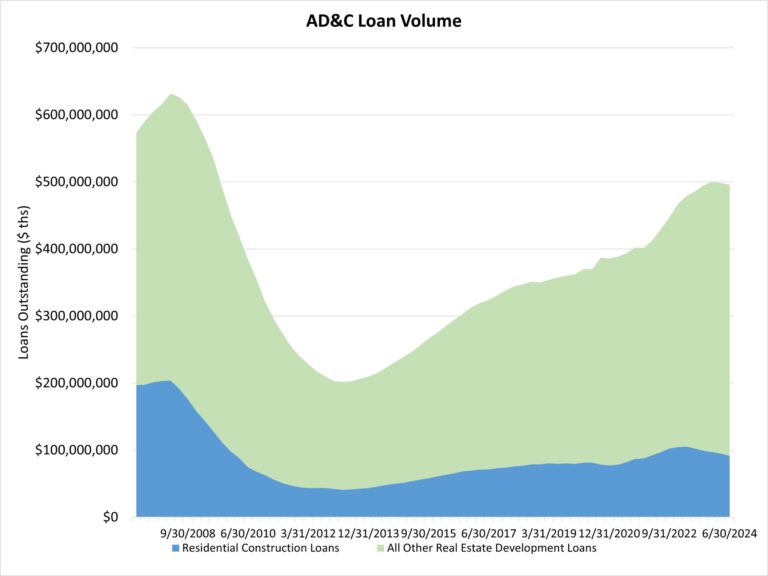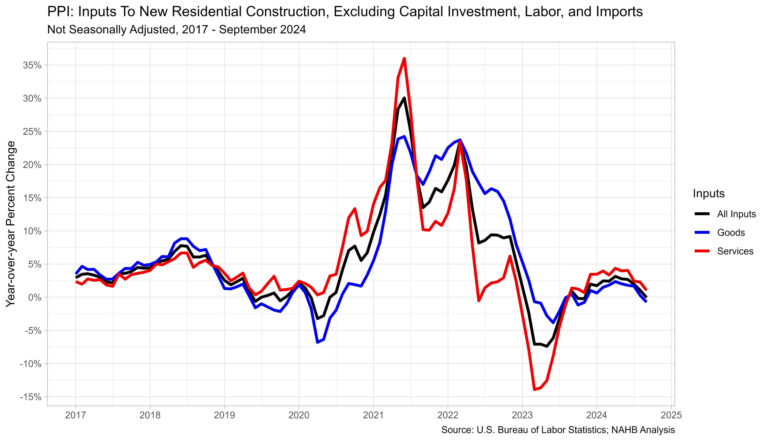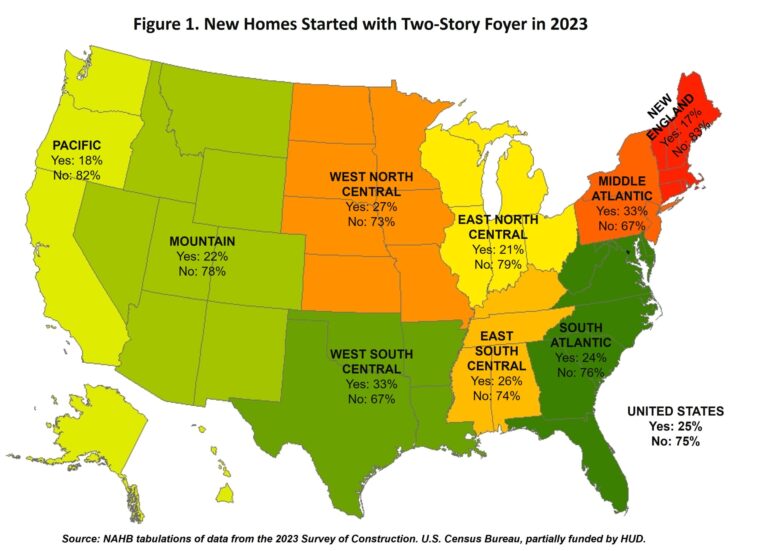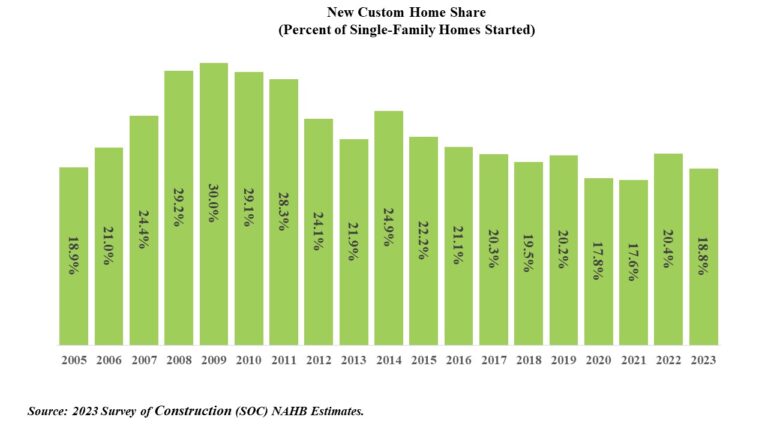After a period of slowing associated with declines for some elements of the residential construction industry, the count of open construction sector jobs remained lower than a year ago, per the January Bureau of Labor Statistics Job Openings and Labor Turnover Survey (JOLTS).
The number of open jobs for the overall economy increased from 7.51 million in December to 7.74 million in January. This is notably smaller than the 8.47 million estimate reported a year ago and reflects a softened aggregate labor market. Previous NAHB analysis indicated that this number had to fall below 8 million on a sustained basis for the Federal Reserve to feel more comfortable about labor market conditions and their potential impacts on inflation. With estimates remaining below 8 million for national job openings, the Fed in theory should be able to cut further despite a recent pause. However, tariff proposals may keep the Fed on pause in the coming quarters.
The number of open construction sector jobs increased from a revised 205,000 in December to 236,000 in January. This nonetheless marks a significant reduction of open, unfilled construction jobs than that registered a year ago (407,000) due to a slowing of construction activity because of ongoing elevated interest rates.
The construction job openings rate edged higher to 2.8% in January, significantly down year-over-year from 4.8%.
The layoff rate in construction stayed low (1.8%) in January. The quits rate moved higher to 2% in January, near to its rate from a year ago.
Discover more from Eye On Housing
Subscribe to get the latest posts sent to your email.
This article was originally published by a eyeonhousing.org . Read the Original article here. .
